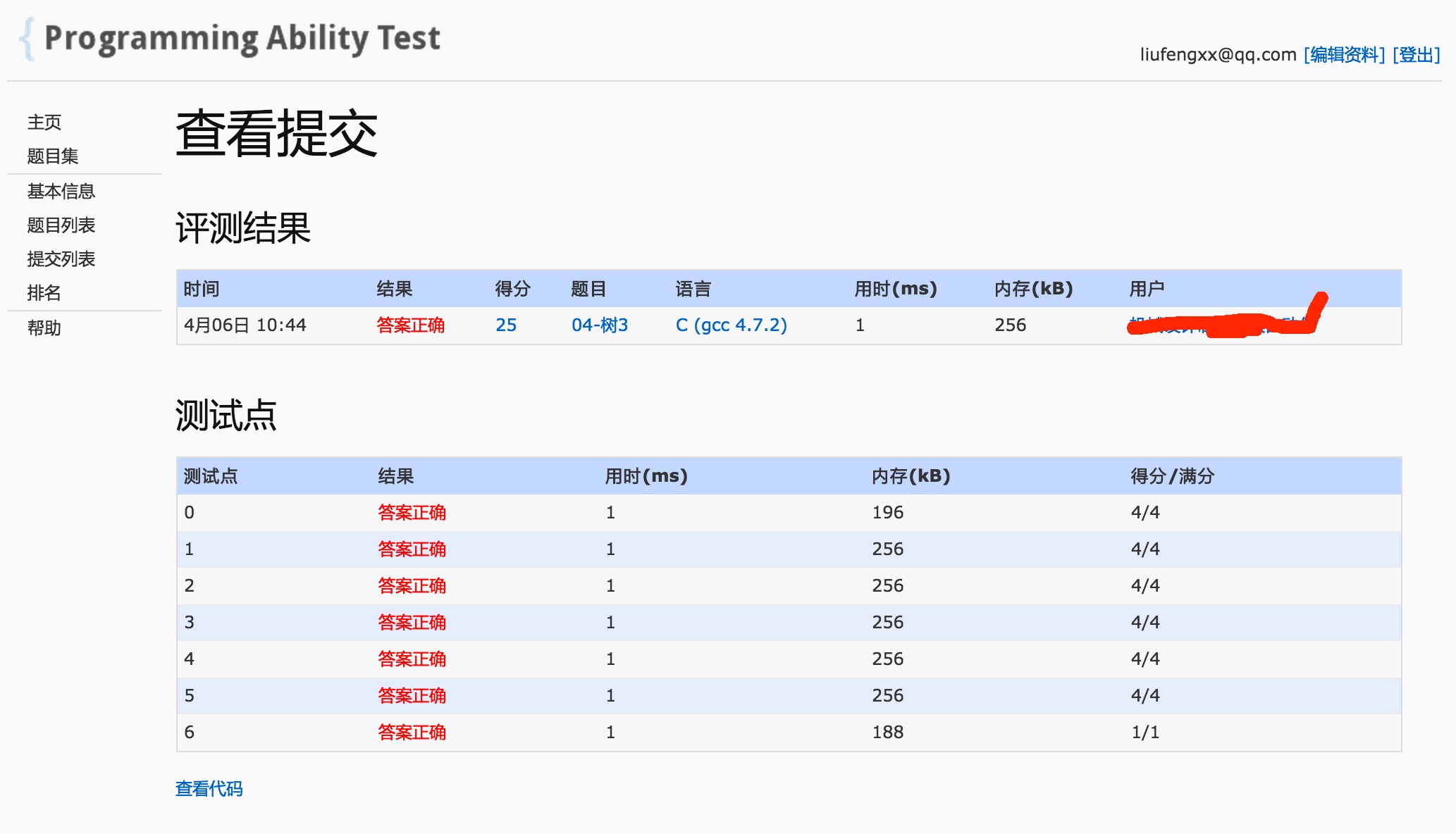题目:
An AVL tree is a self-balancing binary search tree. In an AVL tree, the heights of the two child subtrees of any node differ by at most one; if at any time they differ by more than one, rebalancing is done to restore this property. Figures 1-4 illustrate the rotation rules.

Now given a sequence of insertions, you are supposed to tell the root of the resulting AVL tree.
Input Specification:
Each input file contains one test case. For each case, the first line contains a positive integer N (<=20) which is the total number of keys to be inserted. Then N distinct integer keys are given in the next line. All the numbers in a line are separated by a space.
Output Specification:
For each test case, print ythe root of the resulting AVL tree in one line.
Sample Input 1:
5 88 70 61 96 120
Sample Output 1:
70
Sample Input 2:
7 88 70 61 96 120 90 65
Sample Output 2:
88
分析:主要是训练平衡树的基本操作,四种旋转方式。
代码:
#include <stdio.h> typedef struct treeNode { int data; struct treeNode *left; struct treeNode *right; int height; } AVLTreeNode; // 在PAT提交时出现MAX宏未定义的编译错误,故添加以下几行代码 #ifndef MAX #define MAX(A, B) ((A) > (B) ? (A) : (B)) #endif // 获取节点高度 int GetHeight(AVLTreeNode *treeNode) { if (!treeNode) { return 0; } else { return MAX(GetHeight(treeNode->left), GetHeight(treeNode->right)) + 1; } } AVLTreeNode *SingleLeftRotation(AVLTreeNode *A) { AVLTreeNode *B = A->left; A->left = B->right; B->right = A; A->height = MAX(GetHeight(A->left), GetHeight(A->right)) + 1; B->height = MAX(GetHeight(B->left), GetHeight(B->right)) + 1; return B; } AVLTreeNode *SingleRightRotation(AVLTreeNode *A) { AVLTreeNode *B = A->right; A->right = B->left; B->left = A; A->height = MAX(GetHeight(A->left), GetHeight(A->right)) + 1; B->height = MAX(GetHeight(B->left), GetHeight(B->right)) + 1; return B; } AVLTreeNode *DoubleLeftRightRotation(AVLTreeNode *A) { A->left = SingleRightRotation(A->left); return SingleLeftRotation(A); } AVLTreeNode *DoubleRightLeftRotation(AVLTreeNode *A) { A->right = SingleLeftRotation(A->right); return SingleRightRotation(A); } // 将data插入到AVL树tree中,并返回调整后的AVL树 AVLTreeNode *AVL_insertion(int data, AVLTreeNode *tree) { if (!tree) { // 若插入到空树中,新建一个节点 tree = (AVLTreeNode *)malloc(sizeof(AVLTreeNode)); tree->data = data; tree->height = 0; tree->left = tree->right = NULL; } else if (data < tree->data) { // 插入到左子树中 tree->left = AVL_insertion(data, tree->left); if (GetHeight(tree->left) - GetHeight(tree->right) == 2) { // 需要左旋 if (data < tree->left->data) { // 左单旋 tree = SingleLeftRotation(tree); } else { // 左右双旋 tree = DoubleLeftRightRotation(tree); } } } else if (data > tree->data) { // 插入到右子树中 tree->right = AVL_insertion(data, tree->right); if (GetHeight(tree->right) - GetHeight(tree->left) == 2) { // 需要右旋 if (data > tree->right->data) { //右单旋 tree = SingleRightRotation(tree); } else { tree = DoubleRightLeftRotation(tree); // 右左旋 } } } /* else data == tree->data 无需插入*/ tree->height = MAX(GetHeight(tree->left), GetHeight(tree->right)) + 1; return tree; } int main() { // 读取输入 int count = 0; scanf("%d", &count); AVLTreeNode *tree = NULL; for (int i = 0; i < count; i++) { int data = 0; scanf("%d", &data); tree = AVL_insertion(data, tree); } printf("%d", tree->data); }
运行结果:
